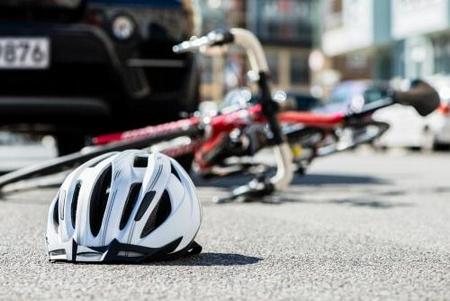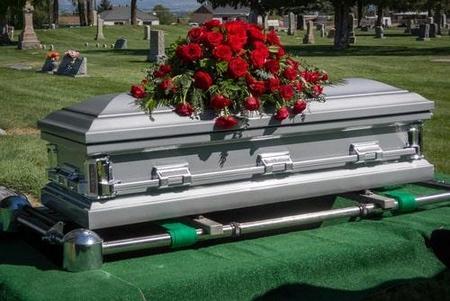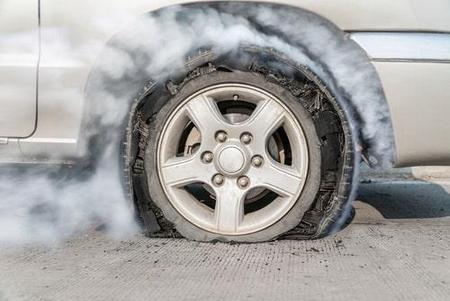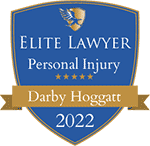Request a Free Consultation | No Upfront FeesSe Habla Español
970-225-2190 |
1-800-664-3151
Recent Blog Posts
Is Driving After Using Cannabis Negligence?
 Recreational and medical cannabis use has been legal for adults 21 and over in Colorado for years. Detecting an odor of cannabis from a residential property is no longer grounds for calling the police, but the same smell emanating from the vehicle that just hit yours is. Driving under the influence of marijuana is a crime in Colorado - and it may be an easy way to establish negligence. Drugged driving is a crime because it is dangerous. When someone chooses to drive despite feeling the effects of cannabis, they are being careless with the safety of others. If you were hurt by a driver who may have been under the influence, you should get in contact with a personal injury lawyer who can set you on the path to recovering compensation.
Recreational and medical cannabis use has been legal for adults 21 and over in Colorado for years. Detecting an odor of cannabis from a residential property is no longer grounds for calling the police, but the same smell emanating from the vehicle that just hit yours is. Driving under the influence of marijuana is a crime in Colorado - and it may be an easy way to establish negligence. Drugged driving is a crime because it is dangerous. When someone chooses to drive despite feeling the effects of cannabis, they are being careless with the safety of others. If you were hurt by a driver who may have been under the influence, you should get in contact with a personal injury lawyer who can set you on the path to recovering compensation.
How Cannabis and Alcohol Use Affect Accident Claims
Driving under the influence of cannabis is just as dangerous as driving under the influence of alcohol, and just as illegal. Colorado treats alcohol and cannabis DUIs in much the same way. If the driver who caused your accident was “high,” he could be subject to arrest on top of being liable to you in a lawsuit. Because driving while impaired - whether by alcohol, cannabis, or another substance - is illegal and highly dangerous, the presumption is that a drunk or drugged driver is liable.
Proving Driver Fatigue After a Truck Accident
 Driver fatigue is one of the leading causes of crashes involving large trucks. Commercial truck drivers work long hours - sometimes longer than they are supposed to. A series of federal regulations govern how long a trucker can drive without stopping, and how long his breaks must be. When drivers ignore those regulations - sometimes with their company’s blessing - devastating crashes can result. The difficulty can be in proving that driver fatigue contributed to the crash. If you were hurt in a trucking accident, it would be wise to contact an attorney as soon as you can. Important evidence can be lost or destroyed very quickly after an accident, so you will want to have your own attorney start investigating right away.
Driver fatigue is one of the leading causes of crashes involving large trucks. Commercial truck drivers work long hours - sometimes longer than they are supposed to. A series of federal regulations govern how long a trucker can drive without stopping, and how long his breaks must be. When drivers ignore those regulations - sometimes with their company’s blessing - devastating crashes can result. The difficulty can be in proving that driver fatigue contributed to the crash. If you were hurt in a trucking accident, it would be wise to contact an attorney as soon as you can. Important evidence can be lost or destroyed very quickly after an accident, so you will want to have your own attorney start investigating right away.
How Can it be Proven that Driver Fatigue Caused the Accident?
A truck driver may be quite literally asleep at the wheel one moment and wide awake the next. In the aftermath of a crash, an adrenaline-fueled driver may not show any signs of drowsiness when the police come to take their report. Officers cannot use roadside drowsiness tests as they would use roadside sobriety tests for a drunk driver. Personal injury lawyers must instead rely on other means to prove that driver fatigue contributed to the accident.
Could the "Rust" Victims Recover Damages in Colorado?
 On October 21, tragedy struck the set of actor Alec Baldwin's movie “Rust” when a prop gun went off, killing cinematographer Halyna Hutchins and wounding director Joel Souza. Negligence-based lawsuits are expected to be filed on behalf of the victims, and Santa Fe County Prosecutors are investigating to determine whether criminal charges should be filed. The incident took place in New Mexico, and so will any resulting lawsuit. This blog will consider how the lawsuit may play out if the incident had occurred in Colorado.
On October 21, tragedy struck the set of actor Alec Baldwin's movie “Rust” when a prop gun went off, killing cinematographer Halyna Hutchins and wounding director Joel Souza. Negligence-based lawsuits are expected to be filed on behalf of the victims, and Santa Fe County Prosecutors are investigating to determine whether criminal charges should be filed. The incident took place in New Mexico, and so will any resulting lawsuit. This blog will consider how the lawsuit may play out if the incident had occurred in Colorado.
How Did the Shooting Happen and How Does Colorado Law Apply?
Facts and details about how a live round found its way into what was supposed to be a “cold” prop gun are still emerging. Clearly, a lot of important industry safety protocols were missed somewhere along the line. Ammunition is generally forbidden on movie sets for this exact reason. Attorneys for the film’s armorer have stated that she did not know where the bullet came from, however, veteran armorers have stated in multiple interviews since the tragic event that the ultimate responsibility for all firearms and ammunition on a film set lies with the armorer.
Determining Liability After a Bicycle Accident in Colorado
 Commuting by bicycle is becoming more and more popular. People may opt to ride a bike to work or other locations because they want to increase their activity level, save on gas, or maintain an eco-friendly lifestyle. Few people rarely consider the risk that comes along with that type of transportation. Riding a bicycle on a busy road leaves cyclists exposed to large vehicles traveling at high speeds, some of which are driven by individuals who are not always as attentive as they should be.
Commuting by bicycle is becoming more and more popular. People may opt to ride a bike to work or other locations because they want to increase their activity level, save on gas, or maintain an eco-friendly lifestyle. Few people rarely consider the risk that comes along with that type of transportation. Riding a bicycle on a busy road leaves cyclists exposed to large vehicles traveling at high speeds, some of which are driven by individuals who are not always as attentive as they should be.
When bicyclists are involved in an accident, they may have legal options available to pursue compensation in court. However, an injured bicyclist should take the time to consider what party is responsible for their injuries and the possible outcomes that may arise in a Colorado courtroom.
Motor Vehicle Driver Liability
All drivers using the road are obligated to uphold a basic duty of care to everyone using the roadways, including other drivers, passengers, bicyclists, and pedestrians. When this duty is breached, the driver may be found negligent in an injurious road accident. When an accident involves a bicyclist, negligence may arise in many forms including speeding, drifting into the bike lane, reckless driving, and running a stop sign. If the driver was already violating traffic laws at the time of the accident, such as speeding, the violation will likely be used as evidence for negligence in the accident.
Common Causes of Truck Driver Fatigue
 Truck drivers face high standards for the number of miles they are expected to drive each day. With the desire to return home to their families as soon as possible, truck drivers often push themselves to drive for much longer and farther than they should. When truck drivers feel pressure to continue driving despite the immense fatigue they are experiencing, catastrophic truck accidents are more likely to occur.
Truck drivers face high standards for the number of miles they are expected to drive each day. With the desire to return home to their families as soon as possible, truck drivers often push themselves to drive for much longer and farther than they should. When truck drivers feel pressure to continue driving despite the immense fatigue they are experiencing, catastrophic truck accidents are more likely to occur.
When a driver’s mind and body are fatigued, they are more likely to fall asleep behind the wheel and cause an accident. But even in cases where the driver is able to stay awake, they will likely struggle to properly control the vehicle and maintain focus. Drowsiness can result in slower response time and failure to notice other vehicles in their blindspots.
Truck drivers are often under pressure to cover great distances in a short amount of time. However, that is not the only reason that a driver in this industry may suffer from fatigue while on the job.
5 of the Most Common Back and Neck Injuries Seen in the Workplace
 Workplace injuries can be sudden and catastrophic. In other cases, they can occur over a long period of time. Employees are subject to potentially serious damage to their bodies, specifically neck and back injuries. Employees should know what symptoms to look out for, and what professions are most susceptible to neck and back injuries.
Workplace injuries can be sudden and catastrophic. In other cases, they can occur over a long period of time. Employees are subject to potentially serious damage to their bodies, specifically neck and back injuries. Employees should know what symptoms to look out for, and what professions are most susceptible to neck and back injuries.
The Most Common Types of Workplace Back and Neck Injuries
Work-related injuries can result in debilitating pain that makes completing regular actions an arduous task. Suffering a back or neck injury at work can lead to months spent rehabilitating and possibly even surgeries. These types of injuries are physically draining and can also have an impact on an individual emotionally and financially. Some of the most commonly seen back and neck injuries suffered on the job include:
- Whiplash
- Lumbar spine injuries
- Herniated disc
Who Can File a Wrongful Death Claim in Colorado?
 Losing a loved one unexpectedly can be a devastating and confusing time in a person’s life. When a loved one loses their life in an accident, their family may face many unforeseen expenses and the loss of their loved one’s wages may severely affect their livelihood. If you are considering filing a wrongful death claim after the death of a loved one, you should understand the laws that must be followed in order to seek compensation effectively.
Losing a loved one unexpectedly can be a devastating and confusing time in a person’s life. When a loved one loses their life in an accident, their family may face many unforeseen expenses and the loss of their loved one’s wages may severely affect their livelihood. If you are considering filing a wrongful death claim after the death of a loved one, you should understand the laws that must be followed in order to seek compensation effectively.
Defining Wrongful Death in Colorado
In the event that an individual loses their life to another party’s wrongful act or negligence, a wrongful death claim may be pursued by the appropriate parties. Wrongful death claims are applicable in situations where the victim would have been able to bring an injury claim against the at-fault party, had they survived the accident. Wrongful death may result from numerous types of accidents including car accidents, defective products, and medical malpractice.
Did a Defective Tire Cause Your Car Accident?
 Not only does a vehicle get its passengers from one location to another, but it also acts as a form of protection against other vehicles on the road. Unfortunately, in some cases, a vehicle’s components may put its passengers at risk. Tires are a key factor in vehicle performance, and when tires fail, catastrophic accidents can occur. Understanding how tire blowouts are caused and who may be responsible for the blowout can help injury victims start to recover from these accidents.
Not only does a vehicle get its passengers from one location to another, but it also acts as a form of protection against other vehicles on the road. Unfortunately, in some cases, a vehicle’s components may put its passengers at risk. Tires are a key factor in vehicle performance, and when tires fail, catastrophic accidents can occur. Understanding how tire blowouts are caused and who may be responsible for the blowout can help injury victims start to recover from these accidents.
What Causes Tire Blowouts?
Many tire blowouts are a result of hazardous road conditions. When potholes are present on roadways, tire blowouts are much more likely to occur. Other hazards that may create cuts or small punctures in the tire exist on all roadways, and it is the driver’s responsibility to monitor their tire’s tread for damage. It is also critical for a driver to monitor their tire pressure. It is not uncommon for tire blowouts to occur due to the tires being overinflated or underinflated.
Understanding the Risks and Causes of Rollover Accidents
 Any type of motor vehicle accident can threaten the safety of those directly involved as well as those nearby. Rollovers, often associated with larger vehicles like pickups and SUVs, are some of the most life-threatening accidents that occur both on and off roadways. After a rollover, it may be very difficult to establish who is responsible for a victim’s injuries and understand how the crash happened. Personal injury attorneys who have experience handling rollover accidents can be a great asset for victims in these cases.
Any type of motor vehicle accident can threaten the safety of those directly involved as well as those nearby. Rollovers, often associated with larger vehicles like pickups and SUVs, are some of the most life-threatening accidents that occur both on and off roadways. After a rollover, it may be very difficult to establish who is responsible for a victim’s injuries and understand how the crash happened. Personal injury attorneys who have experience handling rollover accidents can be a great asset for victims in these cases.
The Dangers of Rollover Accidents
Accounting for 6,358 fatalities throughout the U.S. in 2019, rollover accidents are one of the most dangerous vehicle crashes. When a vehicle tips onto its roof or side during an accident, it is considered a rollover. In the majority of instances involving this type of accident, the vehicle makes an impact with something else prior to the roll. This may include another vehicle or a fixed object. When rollovers take a vehicle off of the roadway and passengers are thrown from the vehicle, fatalities are much more likely to occur.
The Dangers of Head-On Collisions in Colorado
 Car crash injury victims may be affected by the accident for the remainder of their lives. Vehicle collisions can stem from a range of causes; however, human error is frequently involved. Head-on collisions are a type of vehicle accident that is often caused by a driver’s negligence. While head-on collisions are fairly uncommon, the results of such an accident are often devastating.
Car crash injury victims may be affected by the accident for the remainder of their lives. Vehicle collisions can stem from a range of causes; however, human error is frequently involved. Head-on collisions are a type of vehicle accident that is often caused by a driver’s negligence. While head-on collisions are fairly uncommon, the results of such an accident are often devastating.
Conifer, CO Head-On Collision Leads to Multiple Fatalities
During the late afternoon of Thursday, August 26, a Colorado man allegedly caused a head-on collision on Highway 285 near Conifer, leading to the deaths of three people, including the driver himself, and serious injuries to others. Other victims included a 55-year-old woman and her 2-year-old granddaughter, who suffered fatal injuries in the collision.
Colorado State Patrol has reported that the man attempted to make an illegal pass before crashing head-on into another vehicle. Eyewitnesses have reported that prior to the crash, they had reported the driver for reckless driving and speeding. At this time, Colorado State Patrol is investigating the possibility of alcohol and excessive speeding being factors in this fatal collision.

970-225-2190 | 1-800-664-3151
1403 W. 29th St.,
Loveland, Colorado 80538
Greeley:
3835 W. 10th Street, Unit 100,
Greeley, Colorado 80634|
970-460-2220
Longmont:
353 Main Street, Suite A,
Longmont, Colorado 80501|
720-575-0509
Boulder:
4450 Arapahoe Avenue, Suite 100,
Boulder, Colorado 80303|
303-997-2018
Ft. Collins:
1109 Oak Park Dr Ste 100,
Fort Collins, CO 80525|
970-225-2190
Cheyenne:
109 E. 17th St., Suite #6148,
Cheyenne, WY 82001|
307-227-4051 (By Appointment Only)















